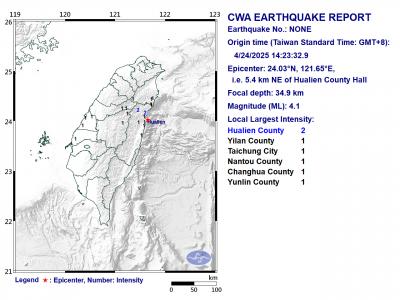An average of 38 children were abandoned by their parents each month last year and in the first half of this year, and a high percentage of them ended up dead, the Children’s Welfare League Foundation said yesterday, urging the public to pay more attention to the issue.
“Last year alone, 460 children were found abandoned shortly after birth, while the number of abandoned children reached 238 in the first half of this year” foundation executive director Alicia Wang (王育敏) told a news conference, citing Ministry of the Interior figures.
“It means as many as 698 children — or an average of 38 per month — were abandoned by their parents in just a year and a half,” she said.
The number doesn’t include children who were found dead or those who were handed over to relatives and are being well looked after, she said.
Although most of the abandoned children were found alive, Wang said about 23 percent of children found alive still died because most had been found along roadsides, in parks, public toilets, trash cans or in remote locations and were in terrible condition when discovered.
Investigating news reports about abandoned children over the past four years, the foundation found that about one-third of the children were born out of wedlock or from underage parents.
“These young parents are children themselves — they cannot afford to raise their children, could not educate their children and, in many cases, suffer from the bias of both society and their own families,” Wang said.
“Once they reach the breaking point and don’t know where to find help, they just abandon their kids,” she said.
The foundation said about 87 percent of children sent to their shelters this year came from families that were hard hit by the recession and could no longer afford to feed and shelter the children.
Wang urged the public to pay more attention to the problem of abandoned children.
She encouraged anyone willing to help these children to contact the foundation at (02) 2550-5959, ext. 1.

PRAISE: Japanese visitor Takashi Kubota said the Taiwanese temple architecture images showcased in the AI Art Gallery were the most impressive displays he saw Taiwan does not have an official pavilion at the World Expo in Osaka, Japan, because of its diplomatic predicament, but the government-backed Tech World pavilion is drawing interest with its unique recreations of works by Taiwanese artists. The pavilion features an artificial intelligence (AI)-based art gallery showcasing works of famous Taiwanese artists from the Japanese colonial period using innovative technologies. Among its main simulated displays are Eastern gouache paintings by Chen Chin (陳進), Lin Yu-shan (林玉山) and Kuo Hsueh-hu (郭雪湖), who were the three young Taiwanese painters selected for the East Asian Painting exhibition in 1927. Gouache is a water-based

A magnitude 4.1 earthquake struck eastern Taiwan's Hualien County at 2:23pm today, according to the Central Weather Administration (CWA). The epicenter of the temblor was 5.4 kilometers northeast of Hualien County Hall, at a depth of 34.9 km, according to the CWA. The earthquake's intensity, which gauges the actual effect of a temblor, was the highest in Hualien County, where it measured 2 on Taiwan's 7-tier intensity scale. The quake also measured an intensity of 1 in Yilan county, Taichung, Nantou County, Changhua County and Yunlin County, the CWA said. There were no immediate reports of damage or injuries.

OFF-TARGET: More than 30,000 participants were expected to take part in the Games next month, but only 6,550 foreign and 19,400 Taiwanese athletes have registered Taipei city councilors yesterday blasted the organizers of next month’s World Masters Games over sudden timetable and venue changes, which they said have caused thousands of participants to back out of the international sporting event, among other organizational issues. They also cited visa delays and political interference by China as reasons many foreign athletes are requesting refunds for the event, to be held from May 17 to 30. Jointly organized by the Taipei and New Taipei City governments, the games have been rocked by numerous controversies since preparations began in 2020. Taipei City Councilor Lin Yen-feng (林延鳳) said yesterday that new measures by

‘WORSE THAN COMMUNISTS’: President William Lai has cracked down on his political enemies and has attempted to exterminate all opposition forces, the chairman said The legislature would motion for a presidential recall after May 20, Chinese Nationalist Party (KMT) Chairman Eric Chu (朱立倫) said yesterday at a protest themed “against green communists and dictatorship” in Taipei. Taiwan is supposed to be a peaceful homeland where people are united, but President William Lai (賴清德) has been polarizing and tearing apart society since his inauguration, Chu said. Lai must show his commitment to his job, otherwise a referendum could be initiated to recall him, he said. Democracy means the rule of the people, not the rule of the Democratic Progressive Party (DPP), but Lai has failed to fulfill his